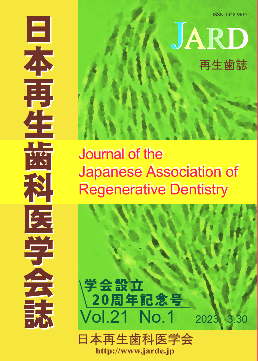Volume 21, Issue 1
Displaying 1-7 of 7 articles from this issue
- |<
- <
- 1
- >
- >|
-
Article type: Review
2023Volume 21Issue 1 Pages 1-10
Published: 2023
Released on J-STAGE: May 07, 2023
Download PDF (2489K) -
Article type: Review
2023Volume 21Issue 1 Pages 11-22
Published: 2023
Released on J-STAGE: May 07, 2023
Download PDF (1074K) -
Article type: Mini Review
2023Volume 21Issue 1 Pages 23-28
Published: 2023
Released on J-STAGE: May 07, 2023
Download PDF (2699K) -
Article type: Mini Review
2023Volume 21Issue 1 Pages 29-34
Published: 2023
Released on J-STAGE: May 07, 2023
Download PDF (3550K) -
Article type: Review
2023Volume 21Issue 1 Pages 35-42
Published: 2023
Released on J-STAGE: May 07, 2023
Download PDF (2123K) -
2023Volume 21Issue 1 Pages 43-50
Published: 2023
Released on J-STAGE: May 07, 2023
Download PDF (1850K) -
2023Volume 21Issue 1 Pages 51-58
Published: 2023
Released on J-STAGE: May 07, 2023
Download PDF (1977K)
- |<
- <
- 1
- >
- >|
